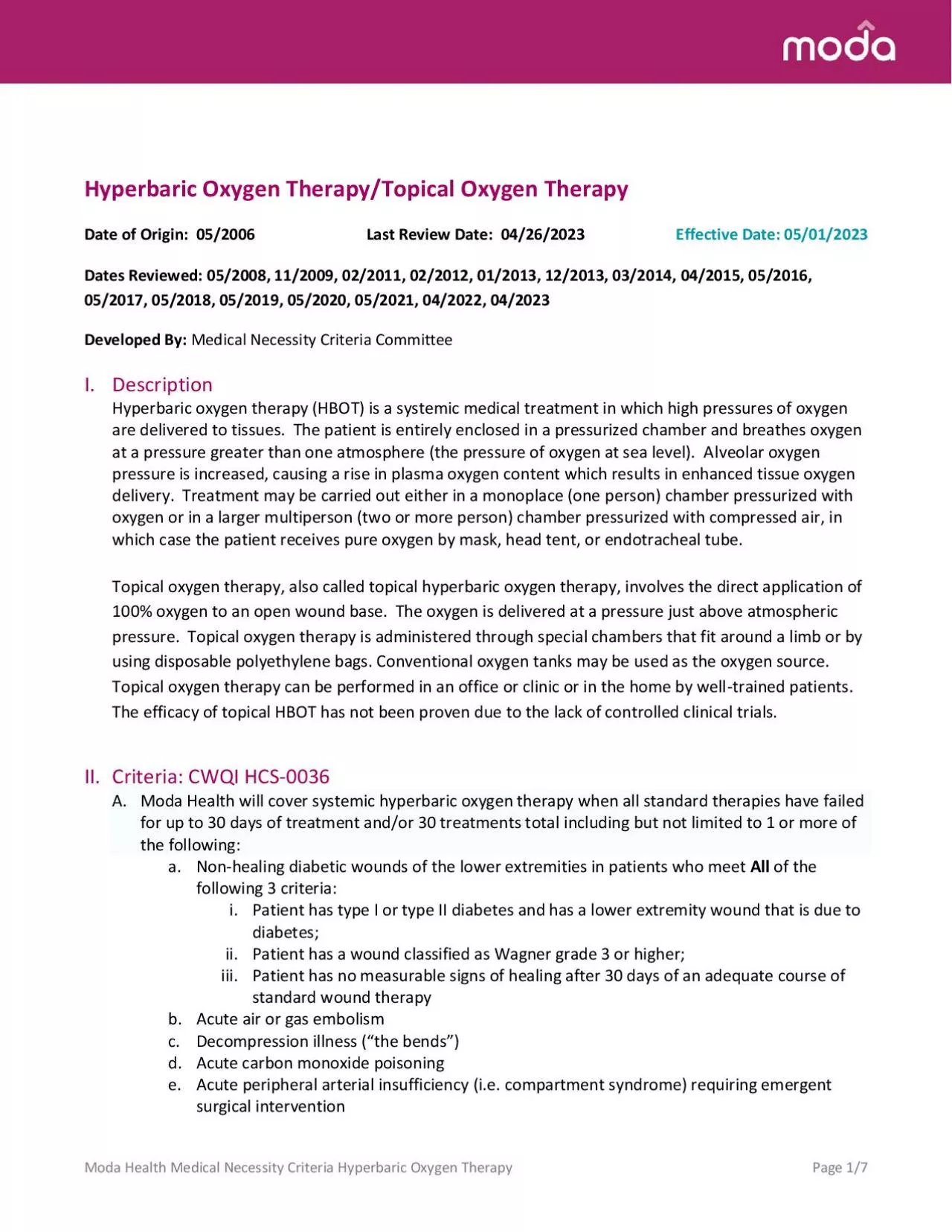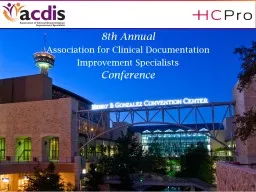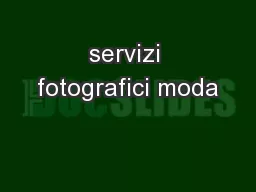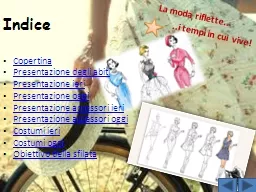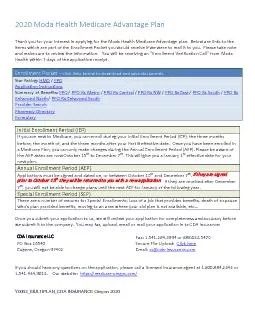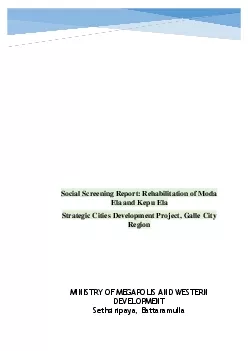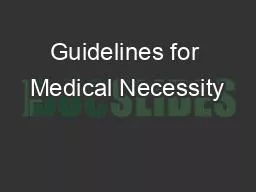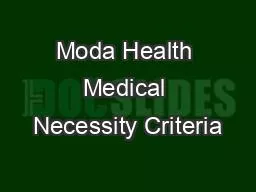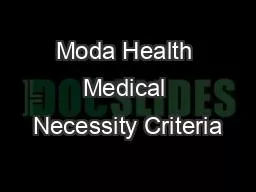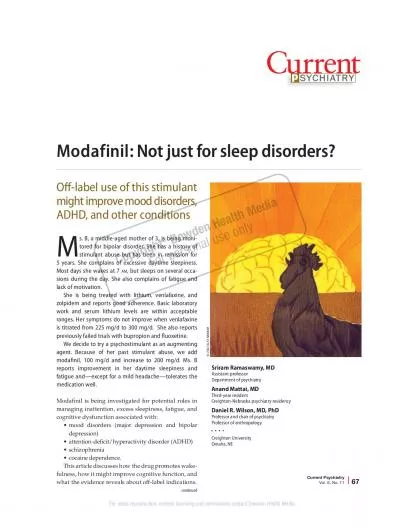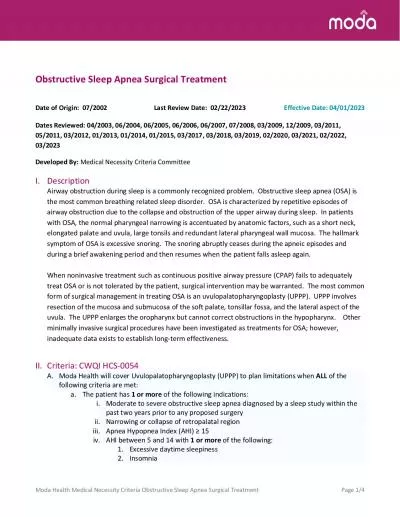PDF-Moda Health Medical Necessity Criteria
Author : jade | Published Date : 2021-10-02
Hyperbaric Oxygen TherapyPage 17Hyperbaric Oxygen TherapyTopical Oxygen TherapyDate of Origin052006Last Review Date05262021Effective Date06012021Dates Reviewed 052008
Presentation Embed Code
Download Presentation
Download Presentation The PPT/PDF document "Moda Health Medical Necessity Criteria" is the property of its rightful owner. Permission is granted to download and print the materials on this website for personal, non-commercial use only, and to display it on your personal computer provided you do not modify the materials and that you retain all copyright notices contained in the materials. By downloading content from our website, you accept the terms of this agreement.
Moda Health Medical Necessity Criteria: Transcript
Download Rules Of Document
"Moda Health Medical Necessity Criteria"The content belongs to its owner. You may download and print it for personal use, without modification, and keep all copyright notices. By downloading, you agree to these terms.
Related Documents

